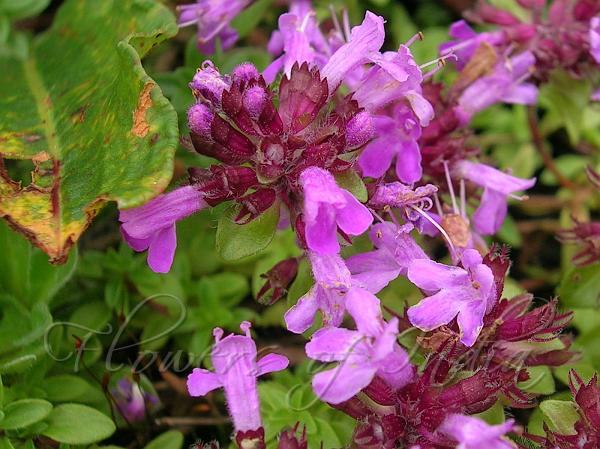|
| Himalayan Thyme |
|

|

| File size | 280498 |
| Original date | 8/16/06 12:42 PM |
| Resolution | 2048 x 1536 |
| Flash | Flash did not fire, auto |
| Focal length | 8.0mm |
| Exposure time | 1/398s |
| Aperture | 3.2 |
| Focus Distance | |
| Metering Mode | Partial |
| Camera make | NIKON |
| Camera model | E3700 |
| Sensor type |
|
|
|
Photo: |
Botanical name: Thymus linearis Family: Lamiaceae (Mint family)
Synonyms: Thymus himalayicus, Thymus afghanicus, Thymus baluchistanicus
Synonyms: Thymus himalayicus, Thymus afghanicus, Thymus baluchistanicus
Himalayan Thyme is a small aromtic shrublet, about 15-30 cm high, with many tiny oblong
leaves and delicate little whorls of pink-purple flowers growing in fairly
dense clusters, occasionally crowding over the leaves. The sepal tube
is bell-shaped and deep purple, out of which purplish-pink tube-like flowers
come out. Flowers are about 6 mm or more, weakly 2-lipped. The upper lip is
notched, while the lower one is 3-lobed, a feature typical of thyme species.
The plant has many medicinal applications. Himalayan Thyme is found on rocky
slope in the Himalayas, from Afghanistan to China, at altitudes of 1500-4300 m.
Flowering: April-September.
Medical uses: Himalayan Thyme contains essential oils including thymol which is a strong antiseptic that is gentle on the skin. In addition to being antiseptic Himalayan Thyme is known to be an expectorant, antispasmodic and carminative (relieves digestive gas) Himalayan Thyme has been used to treat gastrointestinal problems, respiratory disorders and against hookworm. European herbalist have long used it for relaxing baths or in compresses and gargles. It is reportedly beneficial in treating the headache from a hangover and toothache.
Medical uses: Himalayan Thyme contains essential oils including thymol which is a strong antiseptic that is gentle on the skin. In addition to being antiseptic Himalayan Thyme is known to be an expectorant, antispasmodic and carminative (relieves digestive gas) Himalayan Thyme has been used to treat gastrointestinal problems, respiratory disorders and against hookworm. European herbalist have long used it for relaxing baths or in compresses and gargles. It is reportedly beneficial in treating the headache from a hangover and toothache.
| Identification credit: Tabish | Photographed in Valley of Flowers, Uttarakhand & Lahaul Valley, Himachal Pradesh. |
• Is this flower misidentified? If yes,